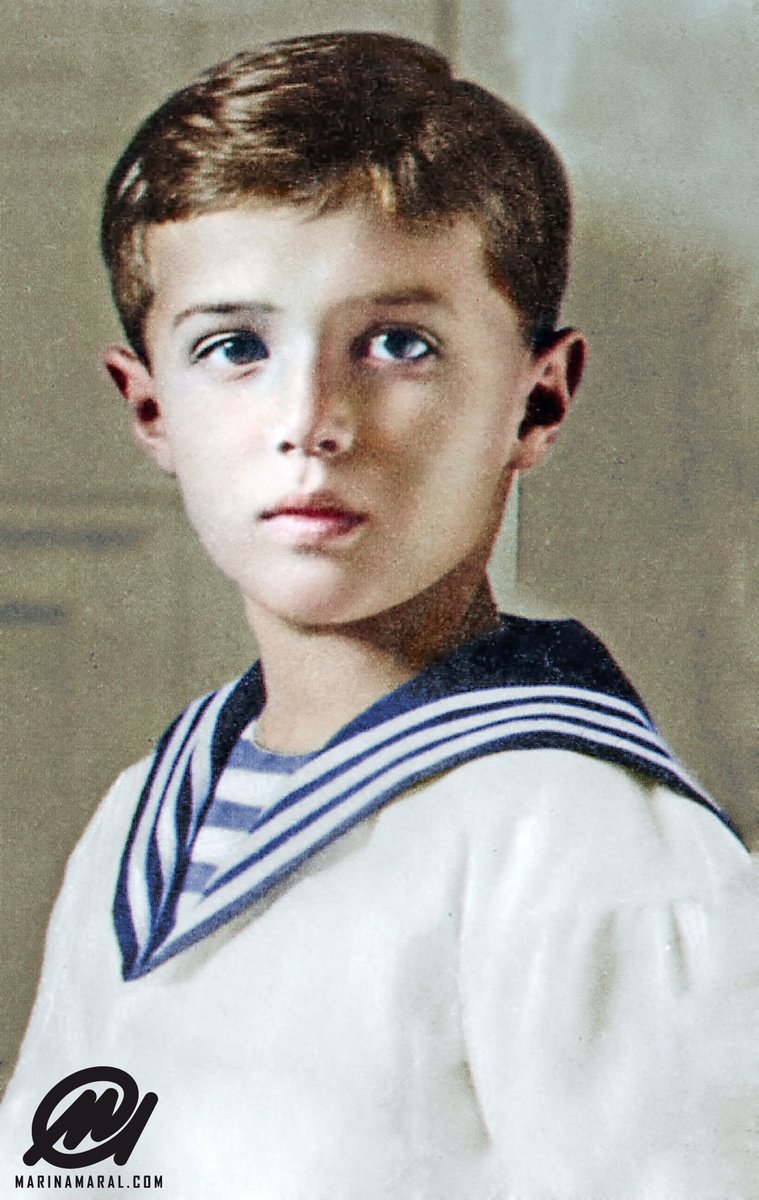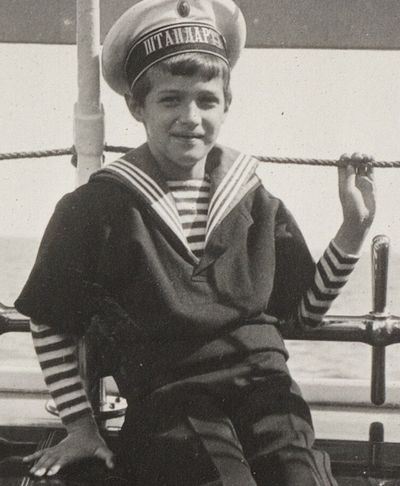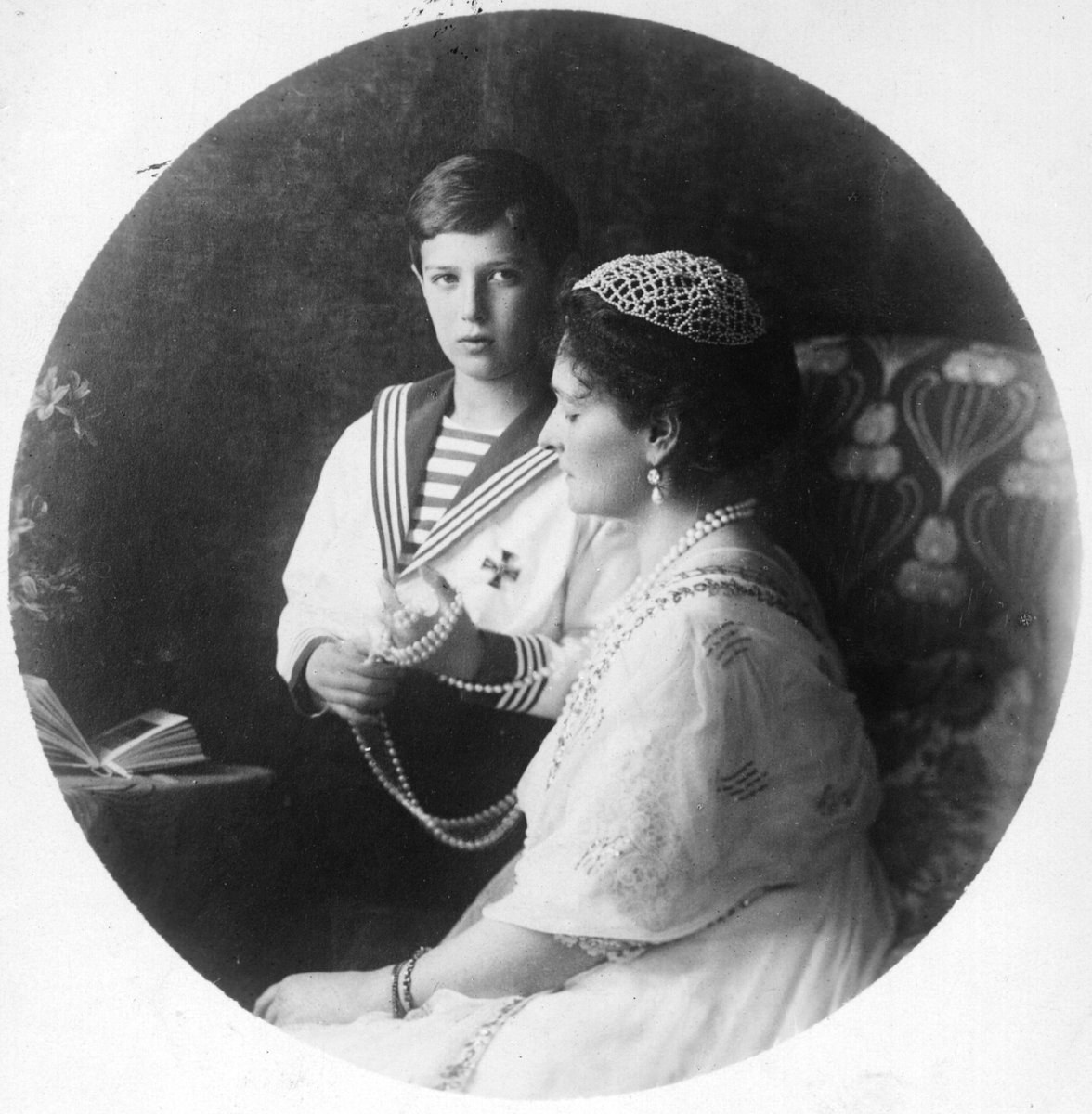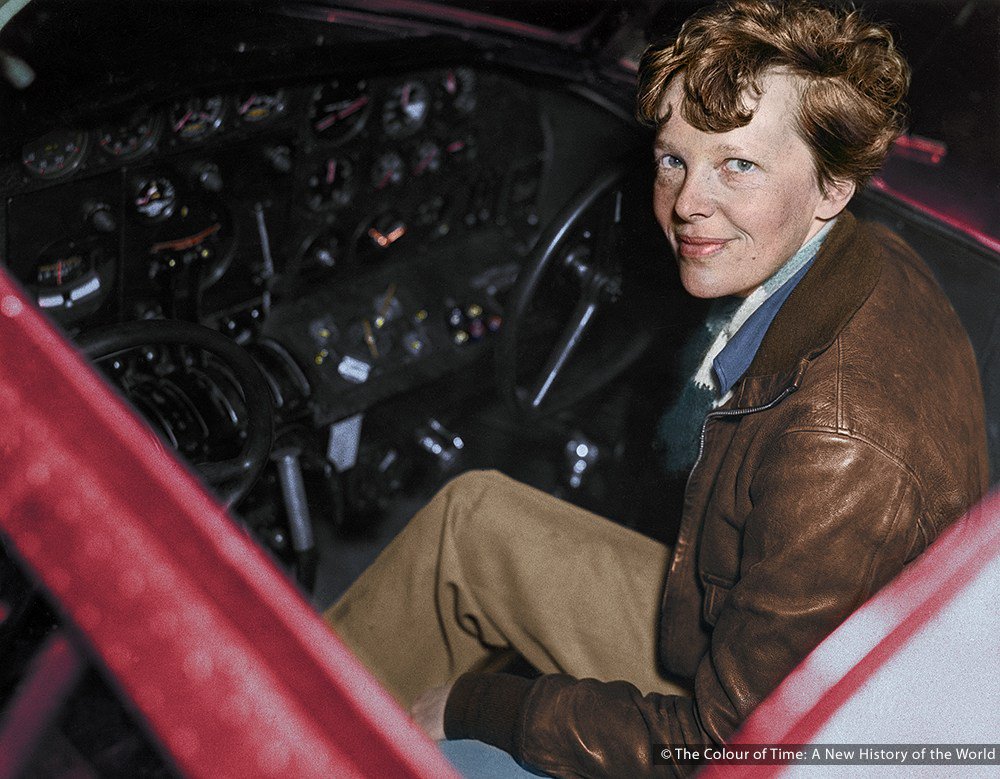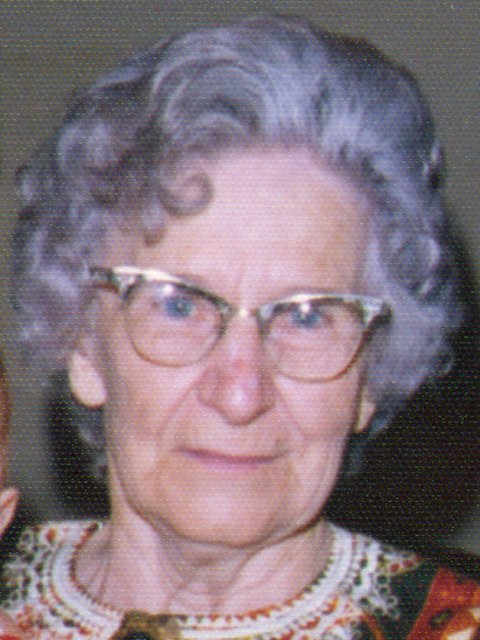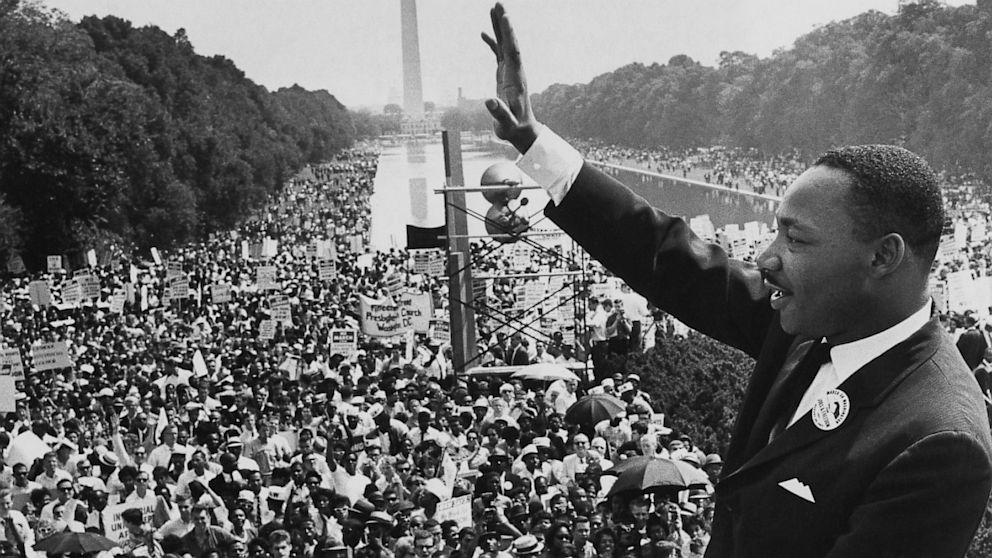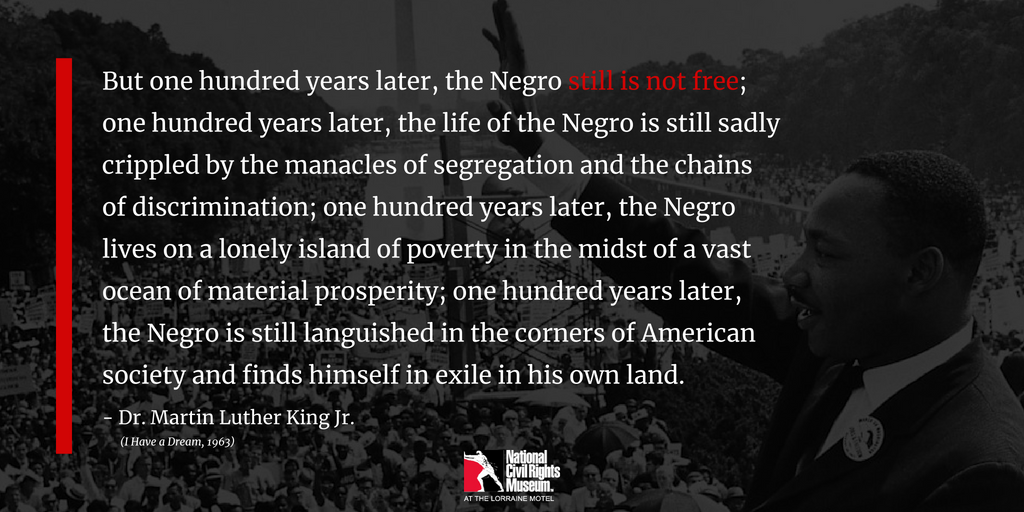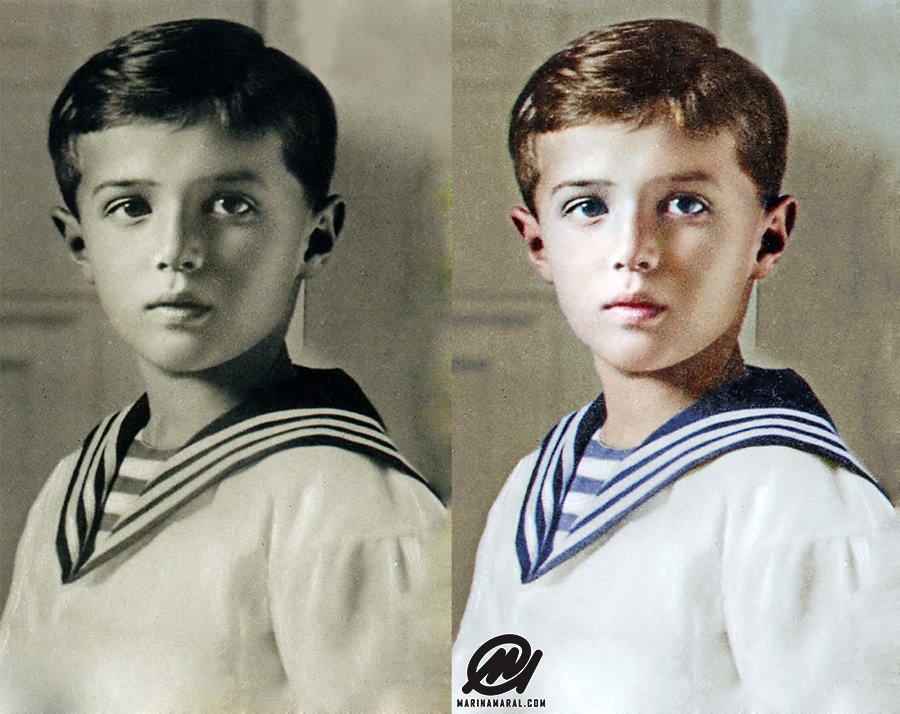
Alexei had to be carried out in an almost unconscious state.
When he was ten, his older sister Olga found him lying on his back looking at the clouds and asked him what he was doing. "I like to think and wonder," Alexei replied. Olga asked him what he liked to think about.
Finally Yurovsky fired two shots into the boy's head, and he fell silent.
The quality of the original photo wasn't the best, but I wanted to colorize and share it anyway. I hope you like it.
